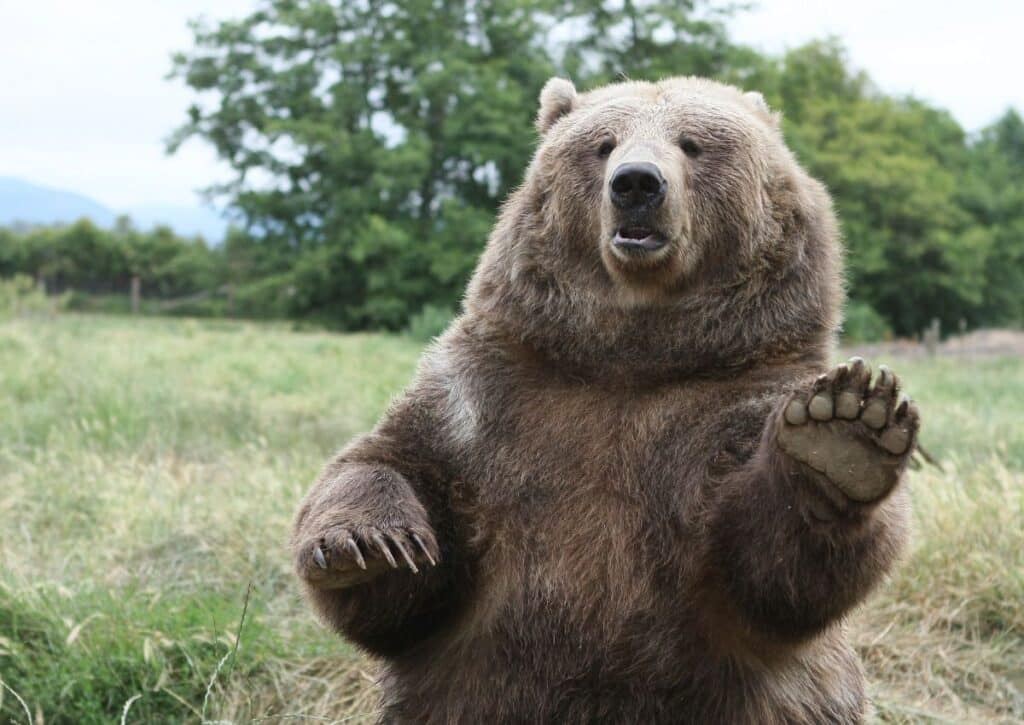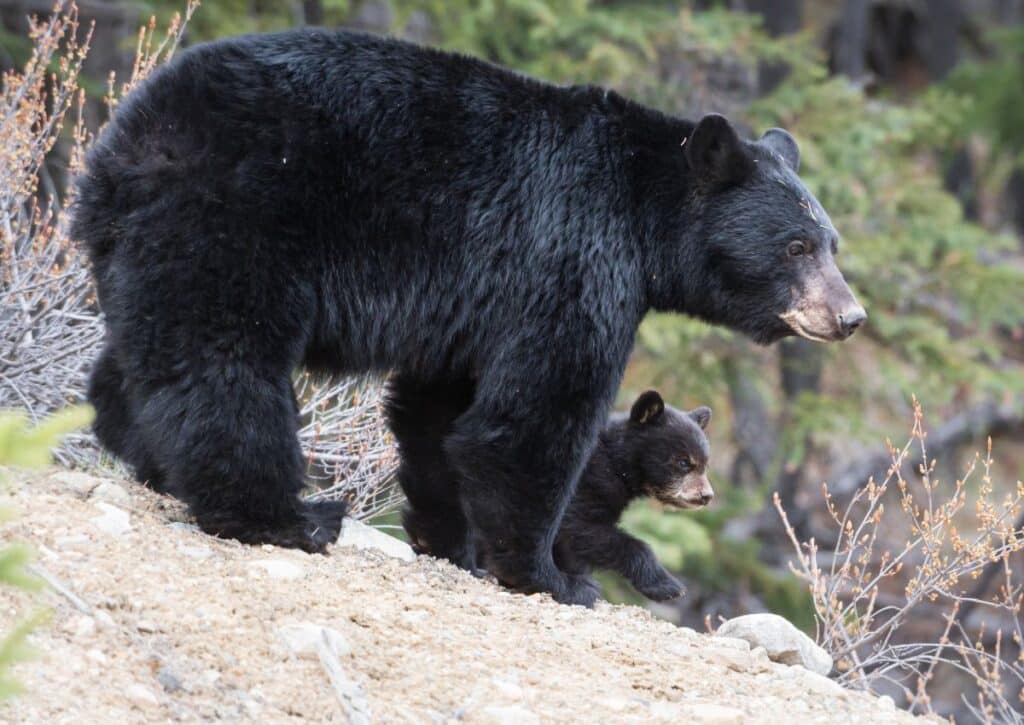Explore Fun Facts About Wildlife in Yosemite National Park! Learn about the park's unique animals, from push-up performing lizards to mimicking birds.
Welcome to Yosemite National Park, a place of breathtaking beauty, towering cliffs, and majestic waterfalls. But hold onto your hiking hats, because the park’s stunning scenery isn’t the only star of the show!
Yosemite is also home to a fascinating cast of wild inhabitants, each with their own quirky behaviors and unique talents.
From high-flying birds and stealthy predators to push-up champion lizards and porcupine-hunting mammals, there’s never a dull moment in this vibrant ecosystem.
So, lace up your hiking boots, grab your binoculars, and get ready to embark on a wild ride through Yosemite’s living wonders.
Prepare to be amazed, entertained, and utterly captivated by the park’s furry, feathered, and scaled residents as we uncover the fun and intriguing facts that make Yosemite’s wildlife as spectacular as its landscapes. Let the adventure begin!
The Multicolored “Black” Bears of Yosemite
Think “black bear” and you’d imagine, well, a black bear. But stroll through Yosemite National Park and you’re in for a colorful surprise. Not all of Yosemite’s black bears wear just black! Some are turning heads with their trendy brown, blonde, and even cinnamon coats.
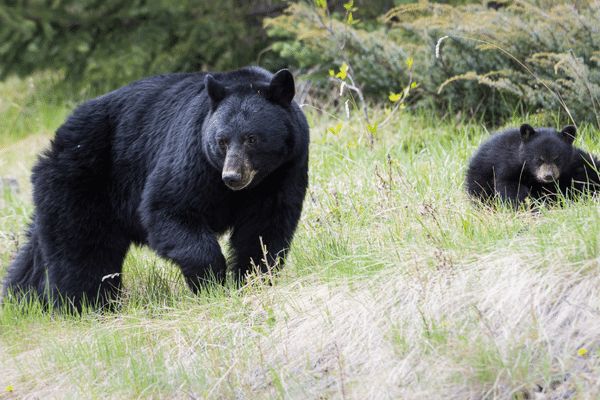
It’s like the bears decided to try out different hair dyes! Picture this: A blonde bear chilling by the river, looking like it just returned from a beach vacation. Or a cinnamon one that seems to have indulged in a bit too much pumpkin spice.
Why the color variety? It’s nature’s cool way of mixing things up. Different fur shades offer these bears some cool perks, from blending in with their surroundings to staying cool or warm.
So, if you’re heading to Yosemite, keep an eye out. You might just encounter a bear that’s breaking the color norms and proudly showing off its unique shade. And who knows? You might leave wishing you had fur as cool as theirs!
Yosemite’s Speed Demons: Peregrine Falcons in Action
Hold onto your hats! When you’re in Yosemite, there’s more than just breathtaking views to look up for. Peregrine falcons, the speedsters of the bird world, rule the skies here. These feathered rockets can hit jaw-dropping speeds of up to 240 mph. Yep, that’s faster than a race car!
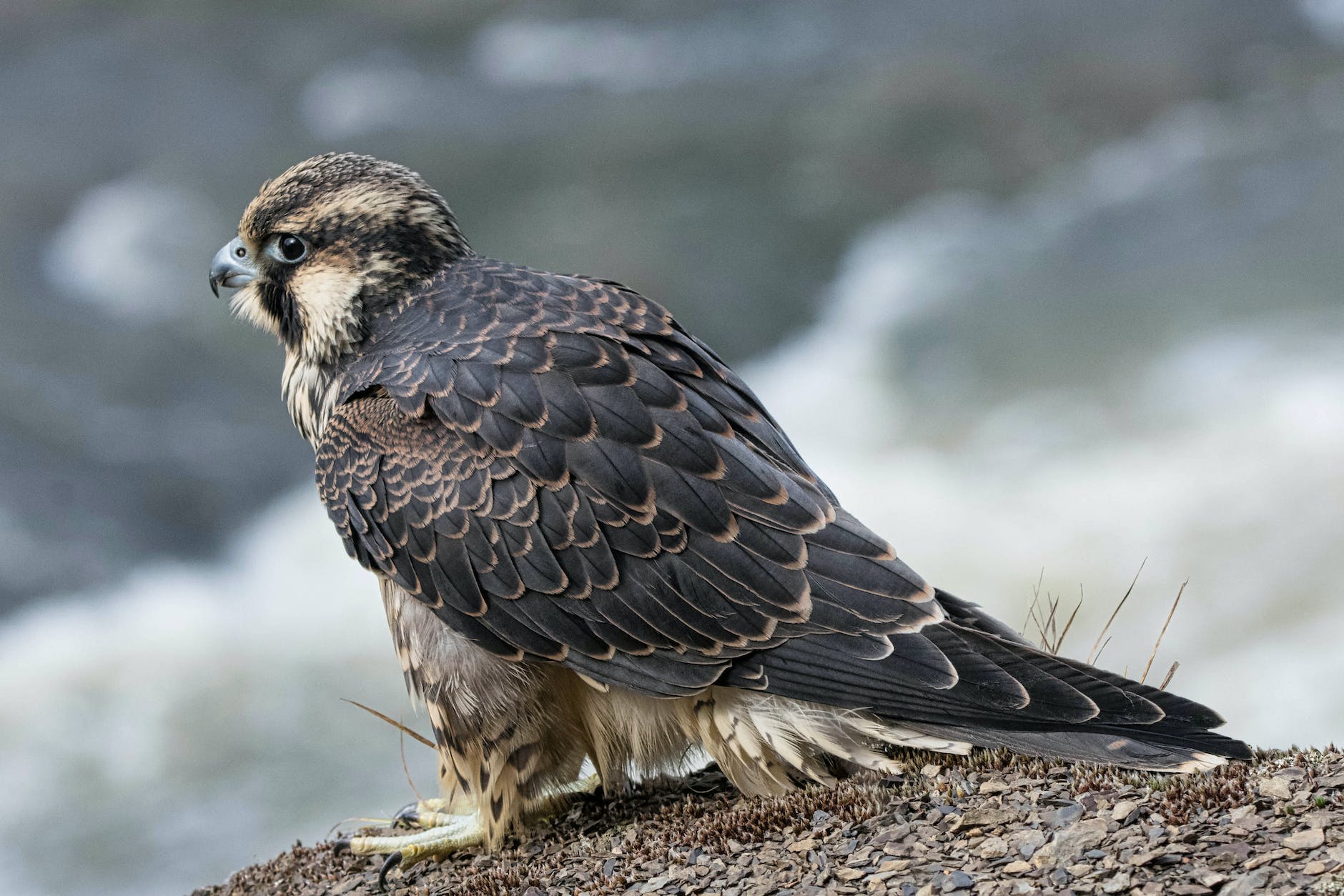
Imagine standing by a cliff and suddenly, whoosh! A falcon zips by in a dizzying dive, hunting for its next meal or simply showing off its aerodynamic prowess. It’s like watching nature’s very own airshow.
These birds aren’t just fast; they’re smart and skilled too. They use their speed to surprise and catch their prey mid-air, making them one of the top predators in the avian world.
So, next time you’re in Yosemite, don’t forget to look skyward. If you’re lucky, you might catch a glimpse of a peregrine falcon zooming past, leaving a trail of awe and amazement in its wake. It’s high-octane birdwatching at its best!
Yosemite’s Pocket-Sized Bunny Cousin: Meet the American Pika
Guess what? Yosemite’s got a little secret up in its high-altitude regions. It’s the American pika, a pint-sized cutie that might make you think “mouse” at first glance. But here’s the twist: this little furball isn’t a rodent at all. It’s actually kin to our fluffy, hop-loving friends – the rabbits!
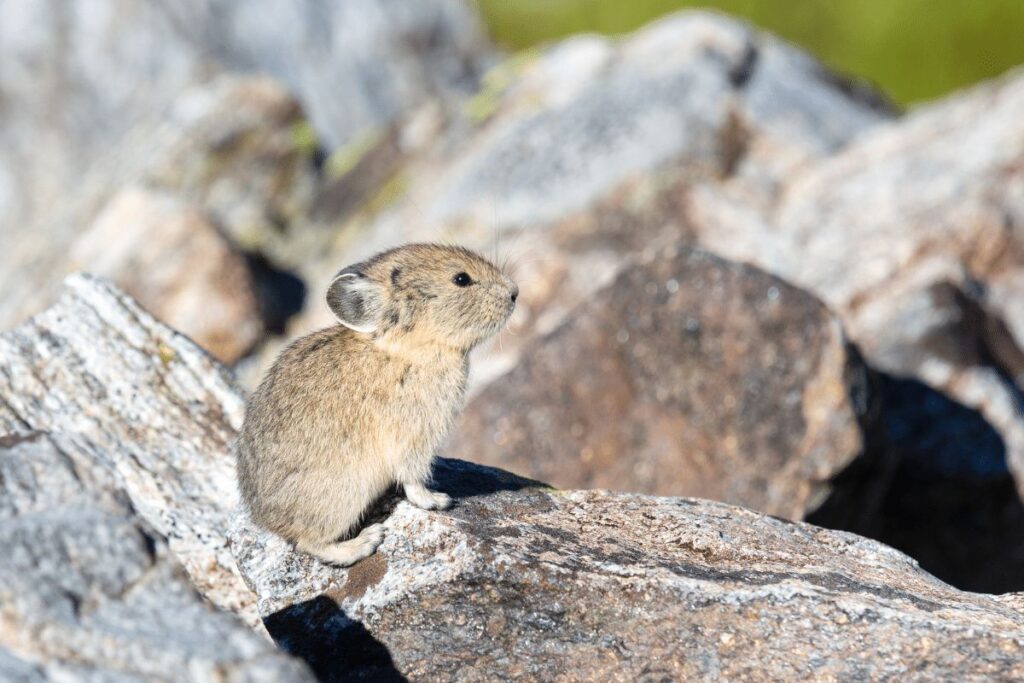
Unlike their bigger bunny cousins, pikas prefer rockier terrains and cooler temperatures. They scamper around collecting grass, making haystacks, and letting out the occasional adorable squeak. And when winter rolls around? They’re all set with their stored food and thick fur.
So, on your next Yosemite hike, keep your ears open for their distinctive calls. Spotting a pika in action is like finding a hidden gem in the vast treasure trove of Yosemite’s wildlife. And remember, they might look like a mouse, but they’re all bunny at heart!
Yosemite’s Star-Studded “Ears”: The Mule Deer
Lights, camera, action! Yosemite’s got its own version of Hollywood stars, and they’re not shy about flaunting their standout feature. Say hello to the mule deer, Yosemite’s “ear-resistible” celebrities known for their impressively large ears. Seriously, these ears could give any mule a run for its money!
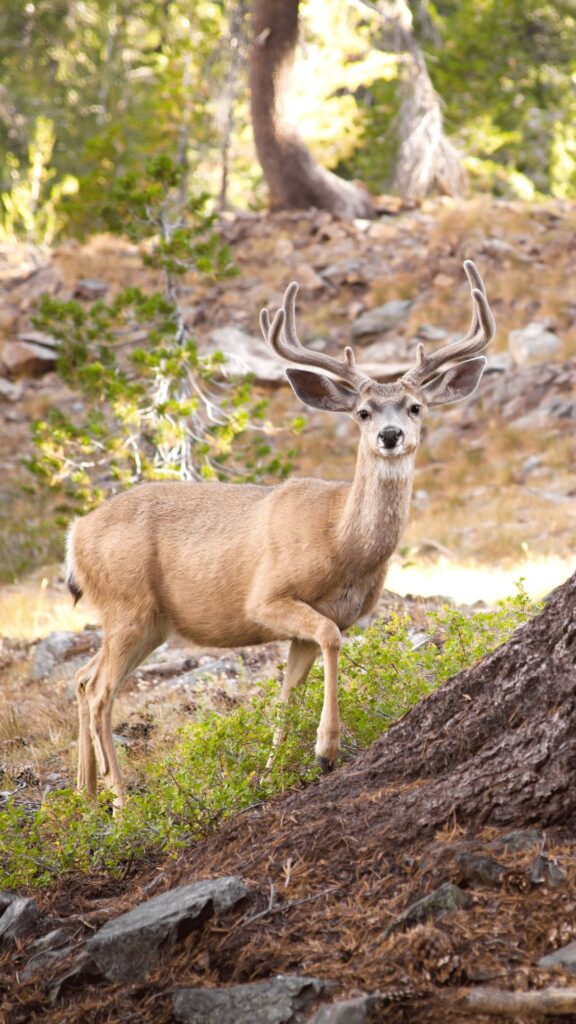
Roaming the meadows and forests, mule deer are easy to spot, and it’s not just because of their size. Those massive ears are like nature’s own radar dishes, picking up even the faintest sounds. Whether they’re munching on some greens or alertly scanning the surroundings, those ears are always on the move.
So, while visiting Yosemite, if you see a deer that seems to have borrowed its ears from a mule, you’ve just met one of the park’s very own celebrities. Don’t forget to snap a pic and maybe even ask for an “ear-tograph”! Just kidding on that last part – but seriously, these mule deer are a sight to behold.
Yosemite’s Stealthy Big Cats: The Elusive Mountain Lions
Ever played hide and seek with a pro? That’s what it’s like trying to spot a mountain lion in Yosemite. These majestic cats are the park’s expert hiders, always lurking in the shadows, rarely seen but always present. Their stealthy nature and expert stalking skills make them one of Yosemite’s most mysterious residents.
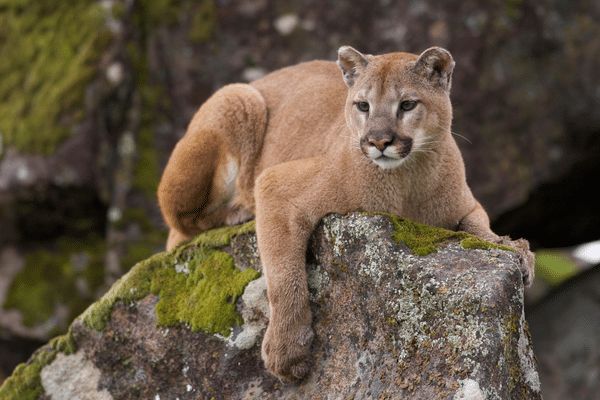
Mountain lions, also known as cougars or pumas, are the park’s top predators. But instead of flaunting their status, they prefer the life of quiet, unseen hunters. They move silently, blend seamlessly into their surroundings, and observe everything with their keen eyes.
If you’re lucky enough to spot one during your visit, consider yourself part of an exclusive club. It’s like stumbling upon a secret, a hidden gem in the vast expanse of Yosemite’s wilderness. But remember, while it’s thrilling to see one, it’s essential to keep a safe distance and respect their space. After all, in the game of wilderness hide and seek, the mountain lion is always the reigning champ!
Yosemite’s Nighttime Flyers with a Craving: Moth-Loving Bats
When night falls over Yosemite, a special group of winged residents come out to play: the bats. But did you know that some of these nocturnal hunters have a bit of a sweet tooth? Well, not for candy, but for moths!
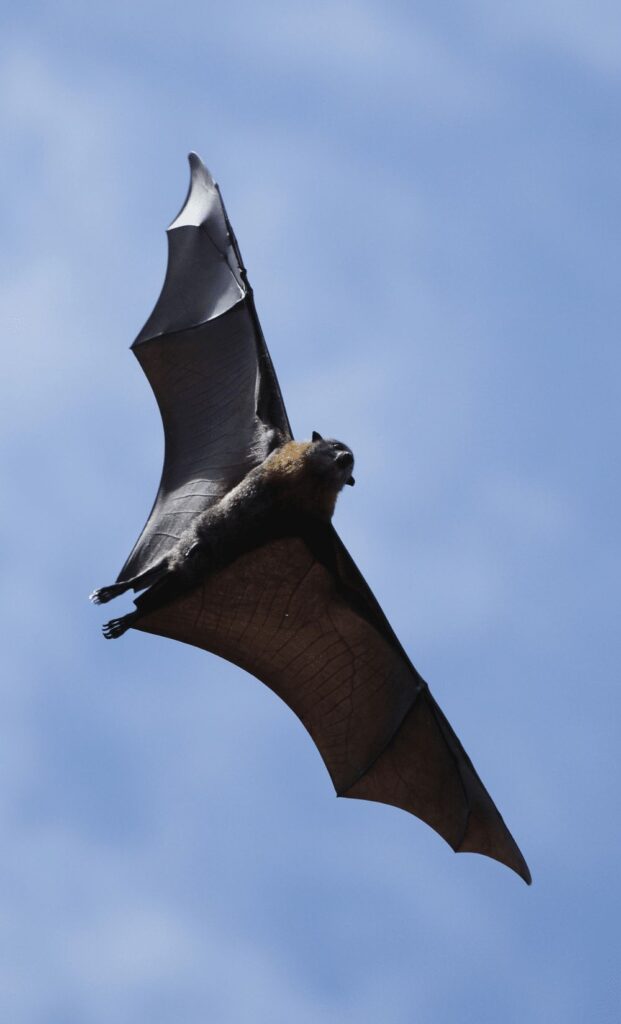
Certain bat species in the park are moth aficionados, feeding exclusively on these fluttery delights. Imagine munching on snacks that weigh half your body weight every night! That’s some serious dedication to their favorite dish.
So, the next time you’re in Yosemite after sundown, think of the bats above, having their moth feast and remember – everyone has their favorite treat!
The Melodious Amphibians of Yosemite: The Sierra Nevada Yellow-Legged Frog
If you’re wandering near Yosemite’s waters during mating season and hear what sounds like a chorus, look down! You might be near a gathering of the Sierra Nevada yellow-legged frogs.
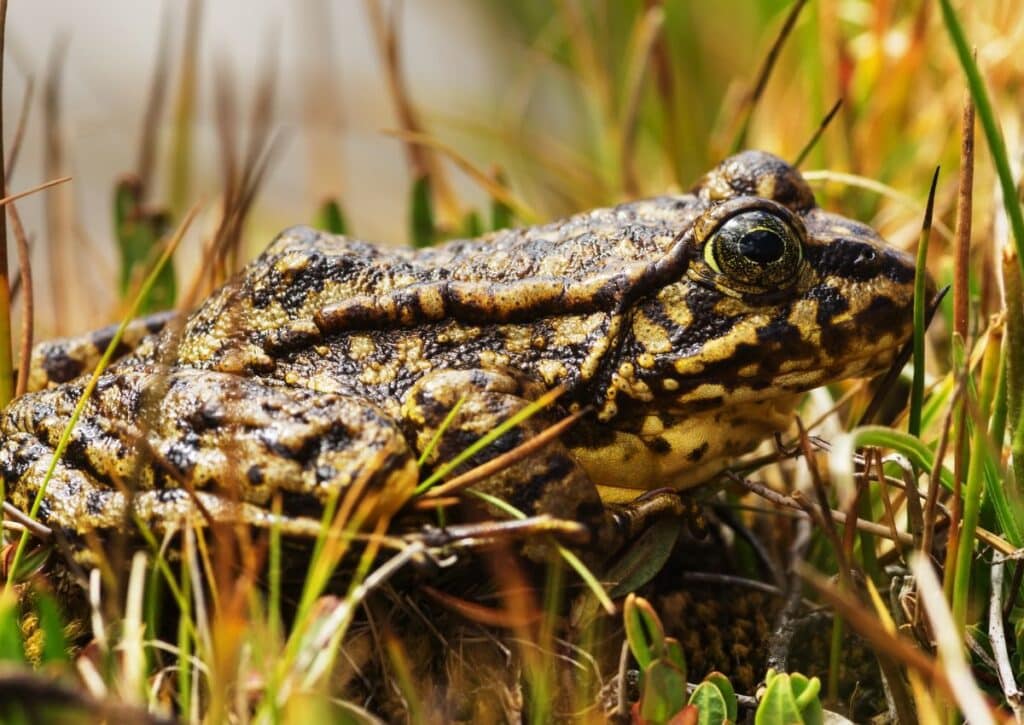
These amphibians are not just about hopping; they’re about harmonizing too. Come mating season, they sing in a synchronized, choir-like fashion, turning the park’s lakes and ponds into nature’s concert halls.
It’s their way of serenading potential mates and creating a melodious ambiance. So, if you happen to catch this froggy performance, take a moment to appreciate the music. It’s Yosemite’s very own amphibian opera!
Yosemite’s Aquatic Journeys: The Epic Trek of Rainbow Trout
Yosemite’s vast landscapes aren’t just breathtaking above the ground. Beneath the shimmering surfaces of its rivers lies an underwater world of wonder, where rainbow trout embark on incredible journeys. Think of these rivers as aquatic highways, and the trout? They’re the intrepid travelers, determined to reach their destination.
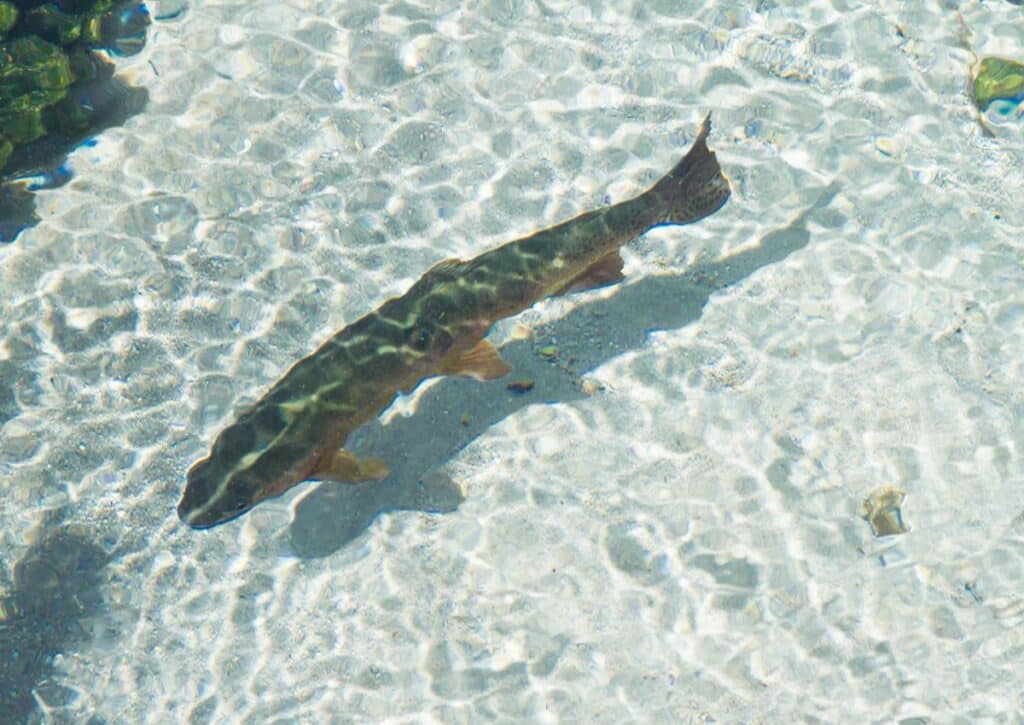
Driven by instinct and determination, rainbow trout swim many miles upstream, battling currents and overcoming obstacles, all in the pursuit of the perfect spawning ground. This trek is more than just a swim; it’s a testament to nature’s drive and the circle of life. Each journey ensures the next generation of trout will continue to grace Yosemite’s waters.
So, the next time you’re by a Yosemite river, take a moment to ponder the epic journeys happening beneath the surface. Every ripple and splash might just be a rainbow trout, on its way to continue the age-old cycle of life.
Yosemite’s Feathered Impersonators: The Stellar’s Jays
In the world of Yosemite’s birdlife, there’s one standout performer that’s sure to grab your attention – the Stellar’s jay. With their striking blue feathers and lively demeanor, they’re hard to miss. But it’s not just their looks that make them stand out; it’s their incredible talent for mimicry.
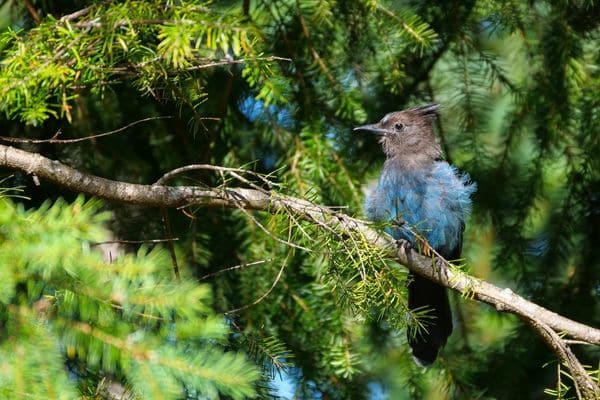
These feathered actors have an uncanny ability to mimic the calls of other birds, effortlessly switching from one bird’s song to another. But they don’t stop there. Some have even been known to imitate mechanical noises, adding a surprising twist to their repertoire. Imagine hearing what sounds like a car alarm or a phone ring, only to find out it’s a Stellar’s jay having a bit of fun!
It’s this playful and adaptable nature that makes them one of Yosemite’s most entertaining residents. So, on your next visit, keep an ear out for the park’s very own avian impersonator. You never know what performance the Stellar’s jay might have in store for you!
Yosemite’s Master of Deception: The Rubber Boa
Slithering through the terrains of Yosemite is a snake that’s mastered the art of deception – the rubber boa. At first glance, this snake might seem like your average serpentine resident, but it has a quirky feature that sets it apart: a tail that looks strikingly similar to its head!
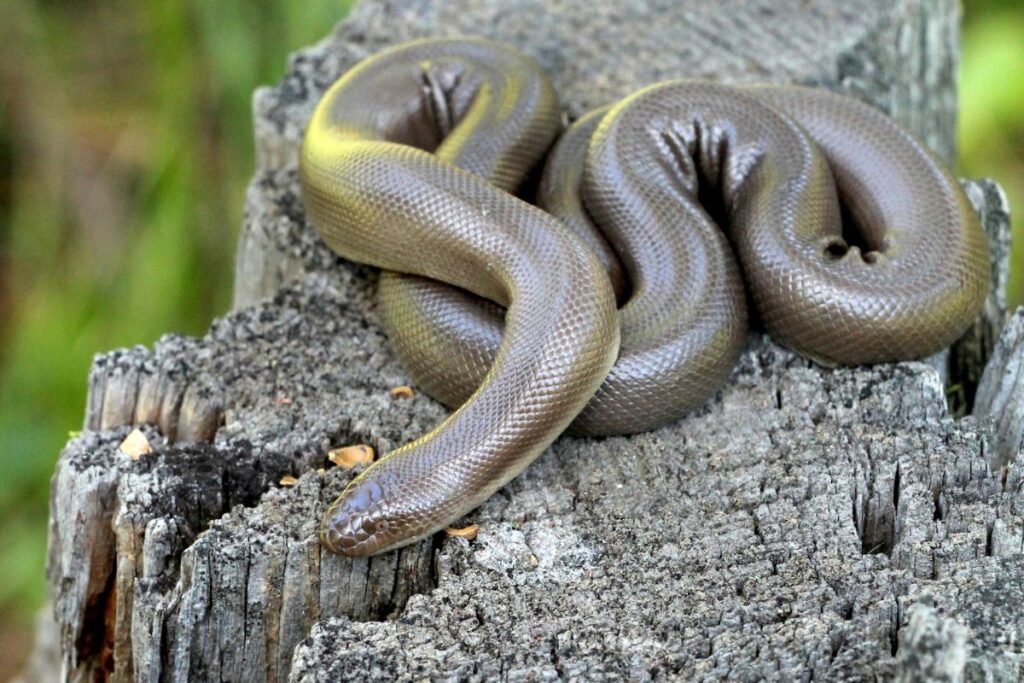
This clever design isn’t just for show; it serves a critical purpose. When faced with a potential threat, the rubber boa can present its tail as a decoy, leaving predators perplexed about which end is the real deal. The confused attacker might go for the tail, thinking it’s the head, giving the snake a better chance to escape unharmed.
The rubber boa’s unique adaptation is a testament to nature’s ingenious ways of ensuring survival. So, while exploring Yosemite’s diverse habitats, keep an eye out for this master of disguise. But remember, you might have to do a double-take to figure out which end you’re actually looking at!
Yosemite’s Furry Predators: The Deceptive Bobcats
Amidst the captivating landscapes of Yosemite, you might come across a creature that embodies the blend of beauty and beast – the bobcat. With tufted ears, spotted coat, and a graceful gait, they might seem like the picture-perfect subjects for a wildlife photograph. However, beneath that cute and cuddly exterior lies a skilled and fierce predator.
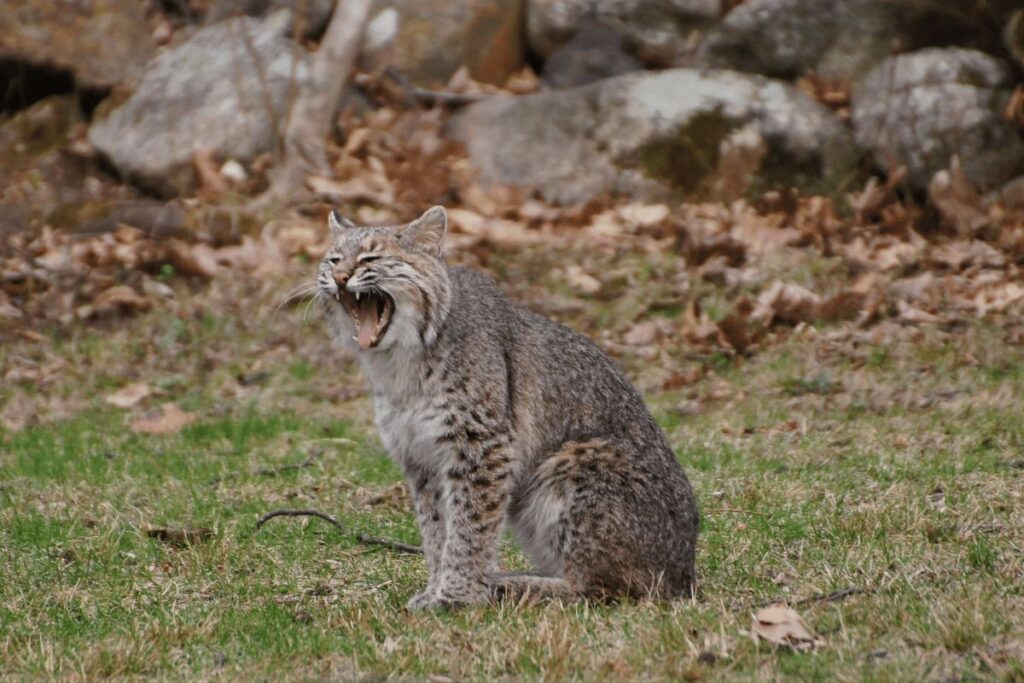
Bobcats in Yosemite are versatile hunters. Their diet is diverse, ranging from small prey like rodents and birds to larger animals like deer. Their stealthy movements, sharp senses, and swift reflexes make them formidable hunters, able to take down prey much larger than themselves.
So, while it might be tempting to get lost in their enchanting appearance, it’s essential to remember and respect the wild nature of these feline residents. They serve as a reminder that Yosemite is a place where the circle of life plays out daily, and every creature, no matter how endearing, has a role to play.
Yosemite’s Vocal Guardians: The Douglas Squirrels
As you wander through Yosemite’s vast landscapes, you might hear a sudden burst of rapid, loud calls, almost as if someone’s ringing an alarm bell. Look around, and you might spot the source: the park’s feisty Douglas squirrels, commonly known as chickarees.
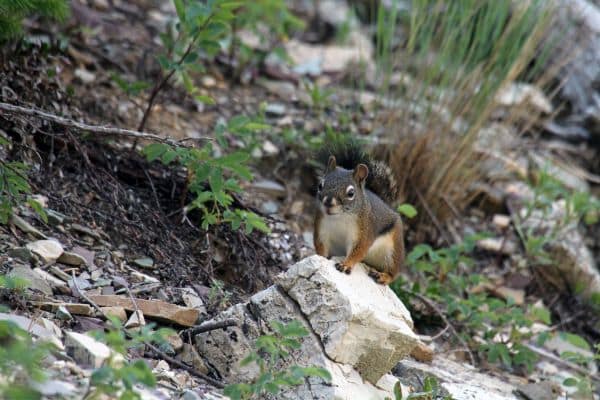
These small, energetic creatures are fiercely protective of their territory. Any perceived intruder, be it a fellow animal or a curious human, might be treated to a vocal scolding. The chickaree’s distinctive calls serve as both a warning to potential threats and a communication tool among their own kind.
But don’t let their admonishing nature deter you. These squirrels are an integral part of Yosemite’s ecosystem, playing roles in seed dispersion and forest regeneration. Their lively presence adds a touch of drama and excitement to the park’s serene environment.
So, the next time you’re in Yosemite and hear the unmistakable chatter of a chickaree, take a moment to appreciate these vocal guardians. Their spirited calls are a testament to the vibrant life that thrives in every nook and cranny of the park.
Yosemite’s Flying Canvas: The Vivid Western Tanager
Picture a bird that seems to have taken a deep dive into an artist’s paint palette, emerging with a dazzling array of colors. That’s the Western tanager for you – a winged wonder that graces Yosemite with its vibrant presence. This bird is a true spectacle, adorned with shades of fiery red, sunlit yellow, and deep black.
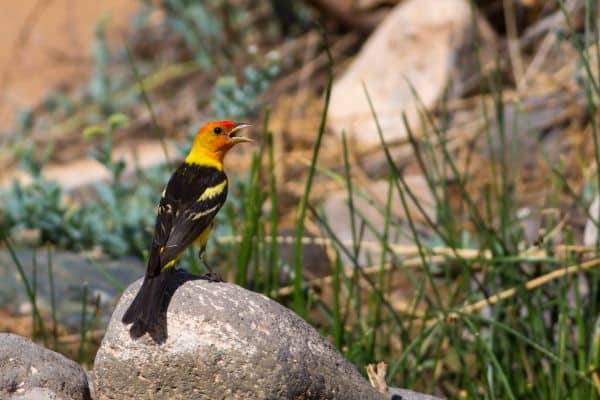
It’s not just its colors that make the Western tanager stand out. The contrast of its shades evokes images of a sunset sky, with reds blending into yellows, set against the canvas of the night. It’s as if nature decided to paint a masterpiece and gave it wings.
As you explore Yosemite, keep your eyes peeled for this avian gem. Whether perched on a branch or fluttering about, the Western tanager is sure to captivate your attention. It serves as a reminder that sometimes, nature’s most astonishing creations are the ones that fly right by us, adding splashes of color to our adventures.
Yosemite’s Identity Mix-Up: The Golden-Mantled Ground Squirrel
Names can be deceiving, and nowhere is this more evident than with the golden-mantled ground squirrel of Yosemite. At first glance, you might assume it’s just another member of the squirrel family, especially given its name. However, here’s a fun twist: this creature is not a squirrel at all, but a close relative of the chipmunk!
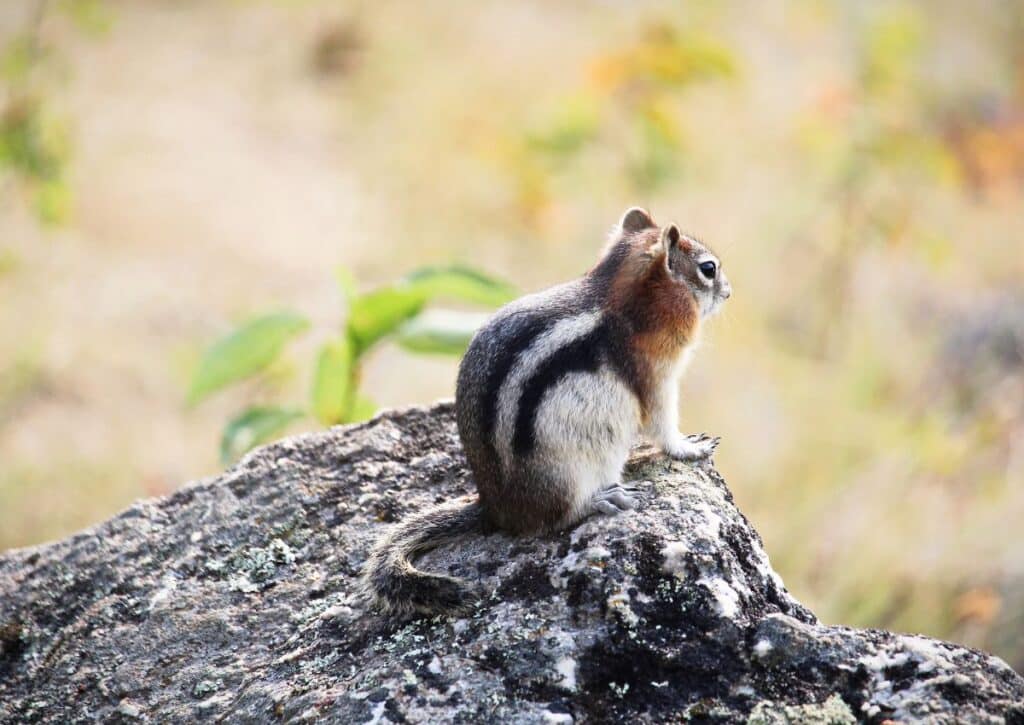
Distinguished by its striking fur pattern with a mix of rich browns and a golden hue around its shoulders, the golden-mantled ground squirrel often leaves visitors puzzled. Its appearance and behaviors closely resemble those of both squirrels and chipmunks, making it an intriguing subject of study and observation in the park.
So, as you trek through Yosemite’s diverse terrains, keep an eye out for this misnamed marvel. It’s a delightful reminder of nature’s whims and wonders, where things aren’t always as they seem. And who knows? You might just find yourself sharing a trail with a chipmunk’s intriguing cousin, reveling in the quirks of the animal kingdom.
Yosemite’s Silent Hunters: The Great Gray Owls
In the hushed ambiance of Yosemite’s forests, a master of stealth takes to the skies: the great gray owl. This majestic bird, with its imposing stature and penetrating gaze, is an expert in silent hunting. But what makes it so eerily quiet during its aerial pursuits?
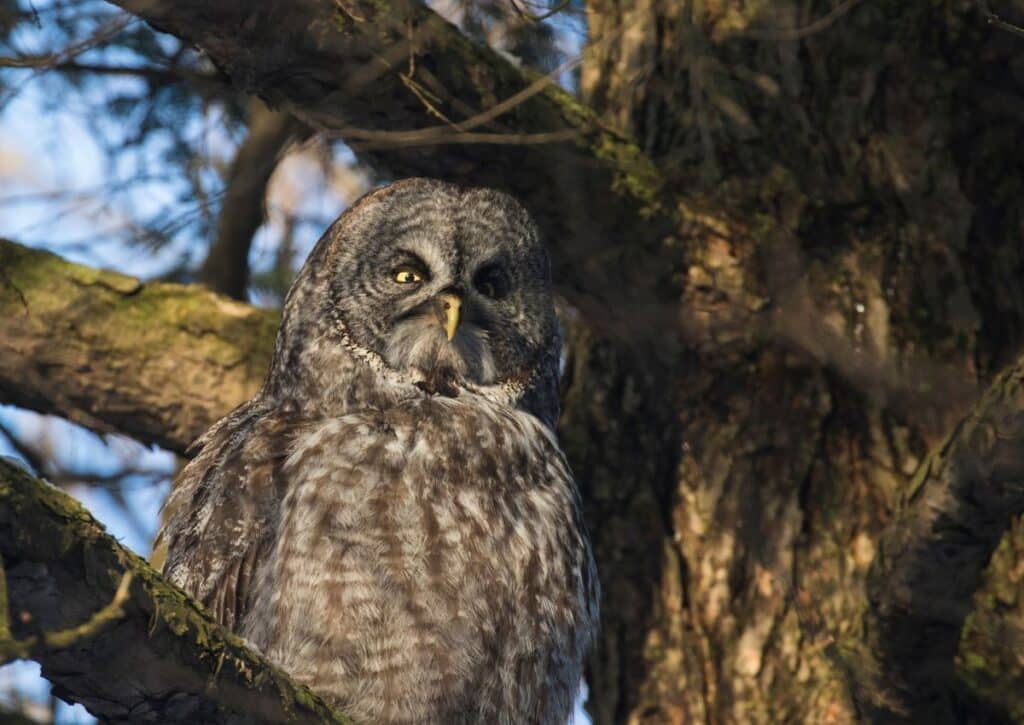
The secret lies in the owl’s unique wing and feather design. The leading edges of their primary feathers have a series of fine, comb-like structures that break up the turbulent air that typically produces a whooshing sound.
Additionally, the rest of their feathers are velvety soft, further dampening any noise. This allows the great gray owl to glide through the air almost soundlessly, catching unsuspecting prey off guard.
Imagine being in Yosemite at dusk, hearing the subtle sounds of the forest, and then witnessing the silent swoop of this owl as it descends upon its target. It’s a testament to nature’s incredible adaptations, where each creature is finely tuned for survival.
The next time you find yourself amidst the towering trees and serene meadows of Yosemite, listen closely. The silence might just reveal the presence of these incredible silent hunters, showcasing yet another marvel of the natural world.
Yosemite’s Architect of the Air: The Cliff Swallow
High up on the sheer faces of Yosemite’s cliffs and vertical walls, a small but industrious bird is hard at work. Meet the cliff swallow, a master builder with a penchant for dizzying heights. While many birds search for nooks and crannies to nest in, the cliff swallow takes a more hands-on approach, creating its own unique home.
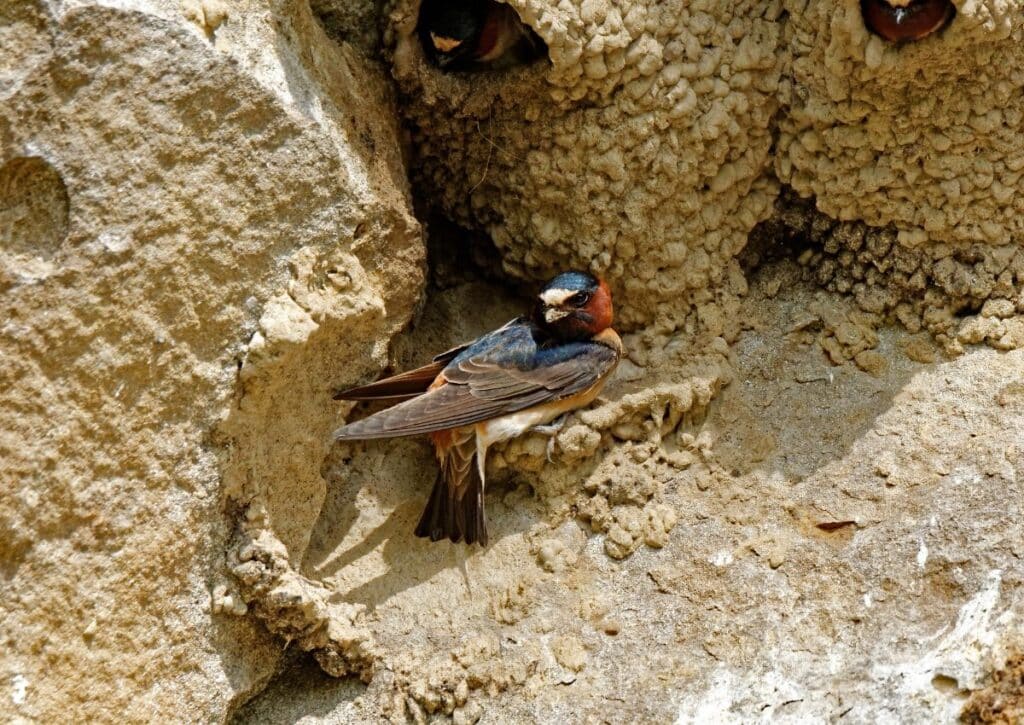
Using hundreds of mud pellets, these avian architects meticulously construct their nests. Each pellet is carefully placed, and over time, a gourd-shaped nest takes form, perfectly adhering to the vertical surfaces. These nests not only provide shelter but also offer protection from predators and the elements.
What’s truly remarkable is the cliff swallow’s ability to source building materials. They swoop down to the ground, collecting wet mud in their beaks, then return to their cliffside construction site. It’s a labor of love, with both male and female participating in the nest-building process.
So, as you explore Yosemite’s vast landscapes, look up! You might just spot these nimble birds darting to and fro, adding another pellet to their ever-evolving homes. The cliff swallow’s dedication and skill serve as a testament to nature’s incredible adaptability and ingenuity.
Yosemite’s Culinary Connoisseurs: The Coyotes
When it comes to versatile dining in Yosemite, the coyotes take the prize. While their howls echoing through the park might be what you remember most, their eclectic tastes are equally noteworthy. These intelligent creatures aren’t picky eaters, and their diet is a smorgasbord of Yosemite’s offerings.
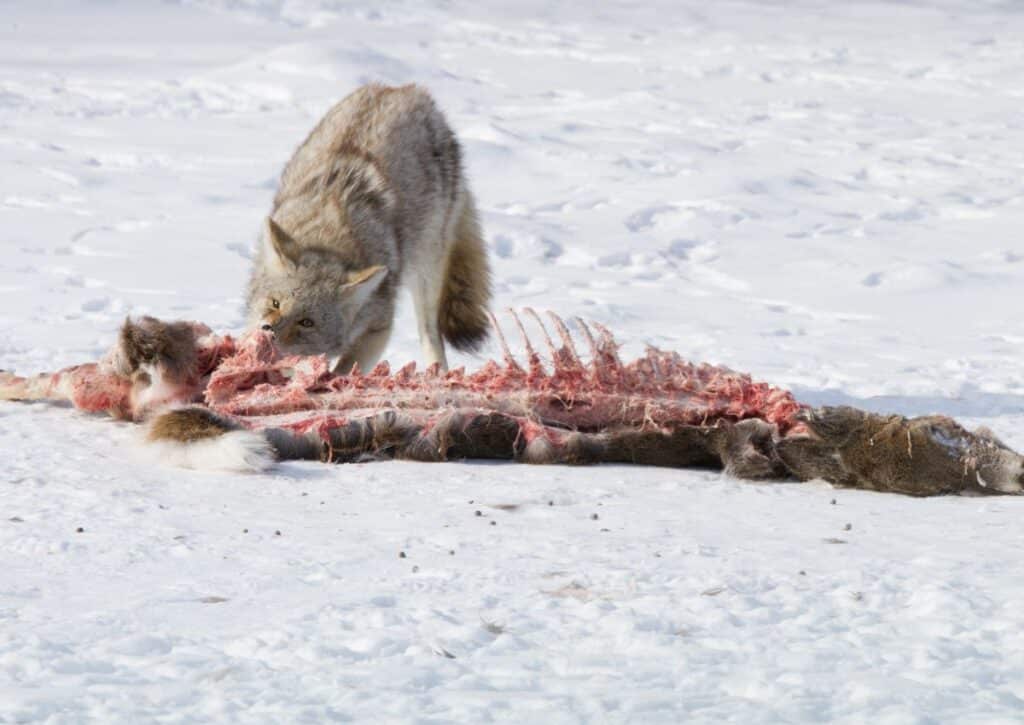
From the juicy berries that stain their muzzles to the insects that provide a crunchy snack, coyotes relish the vegetarian side of their diet. But they’re also adept hunters, silently stalking small mammals like rodents and swiftly chasing down birds. Their keen senses, especially their acute hearing and sharp eyesight, make them formidable predators.
Yet, what’s truly fascinating is the coyote’s adaptability. Depending on the season and availability of food, these canines can shift their dietary preferences. Winter scarcity? They might forage more on plant material. An abundance in spring? Small mammals better watch out.
As you roam Yosemite’s trails, you might catch a glimpse of a coyote in action, nose to the ground, tracking a scent, or perhaps playfully pouncing on an insect. Their diverse diet not only highlights their adaptability but also paints a picture of the park’s rich ecosystem, where every creature plays a role in the grand tapestry of nature.
Yosemite’s Porcupine Pro: The Pacific Fisher
In the diverse ecosystem of Yosemite, one creature stands out for its hunting prowess against a prickly opponent: the Pacific fisher.
This rare carnivore, cloaked in a sleek, dark fur coat, navigates the park’s vast terrain with a special skill set. Its claim to fame? Successfully hunting porcupines without facing the painful consequences most predators would.
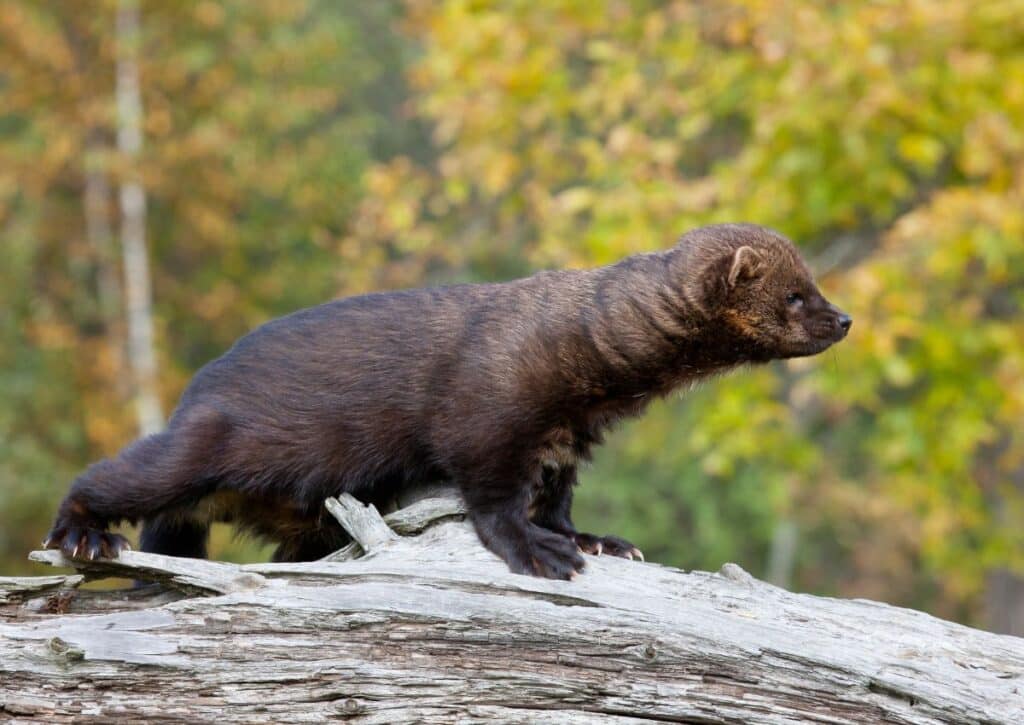
Porcupines, with their quill-laden bodies, are a challenging prey for many. A single misstep can lead to a face full of sharp quills. However, the Pacific fisher has mastered the art of porcupine hunting.
It strategically attacks the porcupine’s face, avoiding the quills, and then flips its prey over to target the vulnerable belly.
This hunting technique not only showcases the fisher’s intelligence but also its agility and patience. It’s a dance of precision, where one wrong move could mean a painful lesson. But for the Pacific fisher, the reward—a hearty meal—is worth the risk.
As you explore Yosemite, keep an eye out for this elusive carnivore. While sightings are rare, knowing that such a skilled hunter is part of the park’s intricate web of life adds another layer of wonder to the Yosemite experience.
The Pacific fisher’s unique abilities are a testament to nature’s endless surprises and adaptations.
Yosemite’s Buffed-Up Lizards: The Western Fence Lizards
Amidst the grandeur of Yosemite’s towering cliffs and cascading waterfalls, a smaller spectacle is taking center stage on the sunlit rocks: the push-up routine of the Western fence lizard. These reptiles, often seen basking in the sun, have a flashy way of staking their claim and showing off – by doing push-ups!
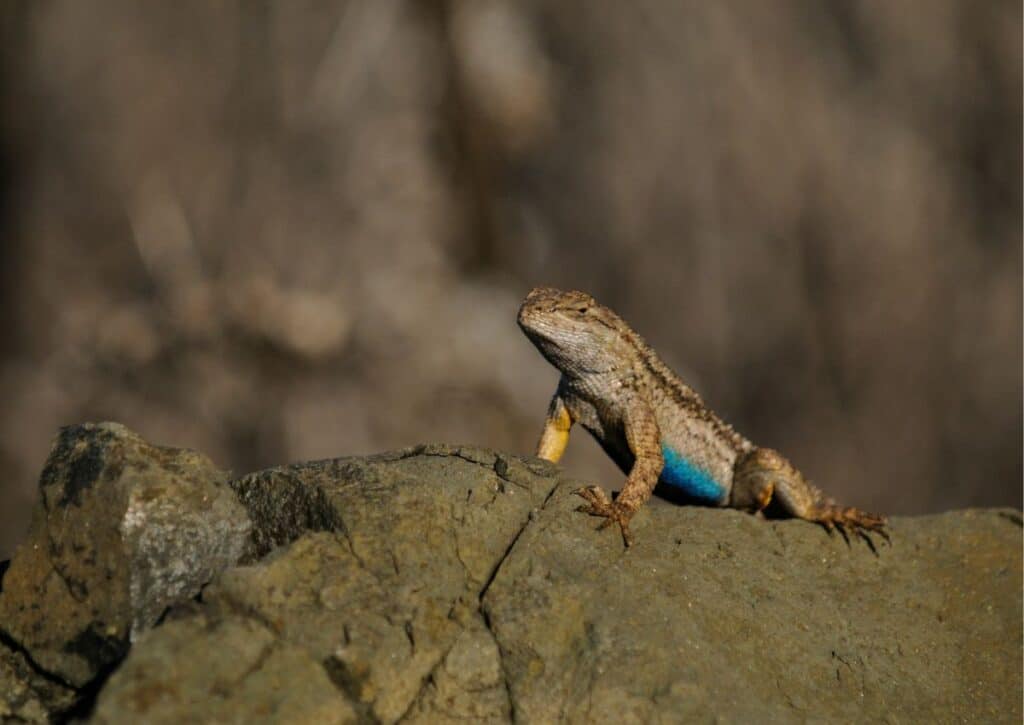
It might sound like a gym enthusiast’s challenge, but for these lizards, it’s serious business. As they lower and lift their bodies, they proudly display their vibrant blue bellies, a sight that’s both a warning to rivals and an attraction to potential mates. It’s nature’s version of a flex-off, and the brighter the blue, the more dominant the lizard.
This fitness routine serves a dual purpose. Not only does it help them establish territory and deter competitors, but it’s also a unique mating display. Female lizards are often seen observing these push-up performances, seemingly assessing the strength and vibrancy of potential partners.
So, while exploring Yosemite’s vast landscapes, take a moment to look down and appreciate the smaller wonders. You might just spot one of these athletic lizards in action, turning a rock into a stage for their impressive push-up show. It’s a delightful reminder that in nature, even the tiniest creatures have their moments to shine!
In Conclusion: Yosemite Unplugged
Yosemite National Park is more than just scenic views and picturesque landscapes. It’s a buzzing hub of activity, filled with animals that surprise, entertain, and educate.
From push-up performing lizards to birds with impeccable mimicry skills, each creature adds a unique touch to the park’s vibrant tapestry. As we wrap up, remember that while the park’s grandeur is a sight to behold, it’s the lesser-known stories of its inhabitants that often leave the most lasting impressions.
Let’s cherish these tales and ensure that future generations can also revel in the wonders of Yosemite’s wildlife. Here’s to the unexpected delights and the wild side of Yosemite!

